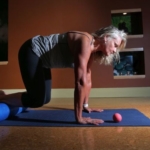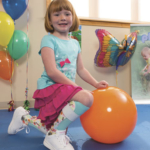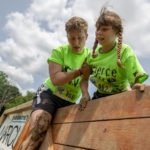Modern approaches to AFOs
AFOs have made strides since their days of bulky and restraining leather and metal componentry. But even the customized thermoplastic devices used by much of the profession still have limitations, the experts say.

WalkOn® Family of AFOs. Ottobock
by Maria St. Louis-Sanchez, The O&P Edge November 1, 2022
Ben Wright, CPO, expects a denial when he makes a reimbursement claim for an AFO or KAFO these days. Wright, clinical manager at Baylor College of Medicine-Ottobock Care, Austin, Texas, specializes in providing his patients with new high-tech AFOs and KAFOs with dynamic ankle systems that are beyond the bounds of current L-Codes. He says the improvement he’s seen in his patients by adopting the use of these devices has made the extra bureaucratic hoops worthwhile.
“The reason is it makes such a significant difference,” says Wright. “I’ve seen way too many improvements in people’s lives to not do this.”
He hopes more in the O&P world will investigate the possibilities beyond traditional AFOs and KAFOs and take a closer look at new devices that are stronger and lighter and allow for greater alignment adjustability and levels of control through composite springs and advanced ankle joints.
Wright has seen the benefits of these new devices firsthand. While working in Utah, he met a nurse with a spinal cord injury. She told him that the AFOs she wore were fine, but she’d like to get something different. An examination showed that she had very weak plantarflexor muscles and moderate triplanar deformities. Those muscles were so weak that she had to often shift her weight from one foot to the other to keep her balance.
It didn’t help that her traditional AFOs locked out her knees, which made it tougher to stand up straight and almost impossible to walk backward. Wright fitted her with bilateral custom AFOs made of carbon fiber that included Posterior Dynamic Element (PDE) modular composite spring systems. He casted her and had the AFOs fabricated by a central fabricator. The devices made an immediate impact. The alignment and spring stiffness meant her lower legs could be inclined, supporting her in standing and preventing muscle fatigue.
“When I fit her, the first thing she said was, ‘Whoa, I can just stand here and I’m not constantly catching my balance,’” Wright says.
She just enjoyed standing still for almost a minute. Wright told her to take it slow as she got used to her new devices. She did not listen. The next day, she sent him a video of her running on the treadmill in her new AFOs.
“I almost had a heart attack, but she was rocking it,” he laughs. “It was amazing. When she married her partner, she could walk easily down the aisle and dance at her reception.”
| Goals and Limitations of Traditional AFOs |
AFOs have made strides since their days of bulky and restraining leather and metal componentry. But even the customized thermoplastic devices used by much of the profession still have limitations, the experts say. Primarily, these devices are expected to provide all the solutions to all the patients, and the experts say that is just not possible with a design that has limited ability to be adjusted once fabricated.
“Through the years, the industry has been working on creating a standardized system and standard universal alignment without taking into consideration the individual needs of the patient,” says Santiago Muñoz, CPO, FAAOP, clinical educator specialist for Fior & Gentz, Lunenburg, Germany.
AFOs are intended to help the patient get as close to a physiological gait as possible. To be successful, the devices need to be strong enough to withstand extreme loads while still being lightweight enough to be functional for the patient. The device is supposed to support patients through their health journey—whether it be gait training in rehabilitation after a stroke, or lifetime wear for a stabilized patient with a spinal cord injury. But unique patients have unique needs, the experts say. Even the same patient will often have changing needs.
“With a solid AFO, I cannot make adjustments in the range of motion. I cannot match the urgent need of alignment with patients with neurological conditions who are in constant evolution,” Muñoz says. “If we lock them in systems that are not adjustable, we are not really providing any support.”
For example, while a patient who had a stroke may initially need a solid AFO, the device cannot be adjusted as his or her proximal strength improves or to allow for a range of motion increase. The patient may also undergo other changes that were not initially compensated for.
“When a patient has a stroke, they need to leave the hospital with an AFO; it’s part of the requirement,” says Muñoz. “But when you first see the patient, they don’t have signs of spasticity. It comes later. What we end up giving to the patients at the hospitals is a simple plastic or carbon AFO custom-made or prefabricated. And when they come back in six weeks, it doesn’t fit because now they have developed spasticity. Now you have to fight the insurance companies because the brand-new device delivered a few weeks ago requires adjustments in the range of motion or alignment not possible in regular AFOs, and it was supposed to last five years in certain conditions.”
Another main limitation is that traditional AFOs are not helpful for problems with the plantarflexor muscles.
“Current traditional designs do very little to compensate for plantarflexion weakness,” Wright says. “Their material properties don’t allow them to.”
In cases of patients with severe triplanar deformity, traditional devices also fall short, Wright says.
“Most deformities occur in all three planes,” he says. “Trying to correct severe rotational deformities in adults with thermoplastic is very, very challenging.”
| A New Generation of Devices |
When Muñoz became an O&P instructor at the University of Pittsburgh in 2013, he was surprised by the teaching guidelines he was given for AFOs. The guidance was the same as he had received as a student 25 years prior.
“And even then, I had thought it was outdated,” says Muñoz.
Since then, he has traveled the world to see the possibilities of modern orthoses. While Europe has widely adopted new devices, and the prosthetics profession in the United States has already adopted parts of this technology, the adoption of these orthotic devices in the US has been slower.
“We have developed an ankle joint system where the independent and simultaneous resistance/assistance forces of dorsiflexion and plantarflexion have been calculated for the specific needs of the patient. I can exchange the forces, provide alignment, and adjust the range of motion independently from each other—something that was specifically dedicated to prosthetics are right now available.”
The experts point out a few categories where there have been strides in AFO technology: Multifunction ankle joints, modular carbon fiber springs, monolithic dynamic response AFOs, and axial offloading dynamic response AFOs.
| Multifunction Ankle Joints |
Adjustable dynamic ankle joints have been changing the market since the Neuro Swing was patented by Fior & Gentz in 2013.
These ankle systems can be constantly adjusted to patients’ needs and their progress through rehabilitation. The systems have the ability to control dorsiflexion and plantarflexion range of motion and regulate plantarflexion versus dorsiflexion assistance. What’s more, these adjustments can be made independently without influencing the other.
For example, if patients have muscle weakness and poor gait pattern, the devices can be tuned to stretch the ankle joint and help strengthen the adjoining muscles. If patients have an active range of motion, such as the ability to move their ankles, the device can be used to help them control the muscles, while a traditional style would block both the good and bad movement.
The three main devices in this area are the Neuro Swing by Fior & Gentz; NextGear Tango by Ottobock, Duderstadt, Germany; and the Triple Action Ankle Joint by Becker Orthopedic, Troy, Michigan.
“They all have their benefits and advantages,” says Ted Friedmann, CO, senior clinical specialist, Ottobock. “They all have the similar characteristic of a more physiological gait for the end user. It’s taking the dynamics of carbon fiber with the adjustability of a dual-action joint.”
He has seen patients with these devices better able to ascend and descend stairs and ramps and to do it while using less energy.
“With these, it doesn’t take as much energy to go up and down ramps, so the patients are more likely to be out and about rather than sit at home doing nothing.”
Muñoz says he uses these devices in combination with the Fior & Gentz Orthosis Configurator that allows him to enter patient data and receive componentry recommendations based on that data.
“We have the tools to make the selection of the componentry based on data collected during the physical examination such as manual muscle tests values of hips, knees, and ankles; range of motion; activity level; gait classification; fatigue, etc., rather than a trial and error,” he says.
| Modular Carbon Fiber Energy Storage and Return Components |
Modular energy storage and return (ESAR) or dynamic response springs have revolutionized adjustability in dynamic ankle joints, Wright says. The components come in different lengths and stiffnesses to adjust for a patient’s weight and activity level. Since there are different sizes and stiffness levels to choose from, all it takes is swapping one out, rather than fabricating a new device, when changes are necessary.
“If I order a spring and put it on their device and it’s too stiff or too flexible, I can easily switch it out for another spring,” Wright says. “It’s hard to explain how much of a game-changer that is.”
Wright says these adjustable components are available in the PDE Springs by Fabtech Systems, headquartered in Everett, Washington, and the Coyote Dynamic Strut by Coyote Design Systems, headquartered in Boise, Idaho.
Wright says he primarily uses these devices for patients who want to be more active. Often, he says, central fabricators and clinics will make their own AFOs using these components.
| Monolithic Dynamic Response AFOs |
These AFOs utilize carbon fiber material to store energy and help in ambulation. The custom-fabricated devices do not have as much adjustability as multifunction ankle joints but have proven successful for patients who require a dynamic response system and are expected to remain stable in their abilities. They are also less expensive than other dynamic options.
“This is an option if cost is a significant issue, and it seems that the patient won’t need as much adjustability,” Wright says.
Some of the leaders in this field include much of the DP line by Motion Limited, Maple Grove, Minnesota; SpryStep Vector by Thuasne, Bakersfield, California; PHAT Braces by Biomechanical Composites, Des Moines, Iowa; or Custom Carbon AFOs by Ottobock.
| Axial Offloading Dynamic Response AFOs |
Axial offloading dynamic response devices help patients with severe pain, such as those with crush injuries, Wright says. They can be used with ESAR componentry and an offloading mechanism at the top of their lower leg to help offload weigh bearing forces.
“Some of these patients are considering amputation because they are in so much pain,” he says. “If you can offload correctly then you don’t need an amputation because the brace is doing the work instead.”
Some of these devices include the ExoSym by Hanger Clinic in Washington; the Momentum Offloading Brace by Blatchford Clinic, Sheffield, United Kingdom; and Reaktiv Modular Dynamic Bracing by Fabtech Systems.
The braces are secured by a BOA dial or have a clamshell design with a Velcro closure.
| Reimbursement Issues |
Perhaps the main reason these devices have not been widely adopted in the US is that they do not have associated L-Codes for reimbursement, the experts say.
“Every time I introduce these devices to someone they say, ‘Wow that’s cool. What’s the code?” Friedmann says. “When I say there isn’t one, they say, ‘What else do you have?’”
While prosthetics have associated L-Codes for modular componentry, or devices that have a dynamic response, orthotics do not have comparable codes.
“It is time for the field to embrace this technology, but unfortunately reimbursement is still one of the biggest issues,” says Muñoz. “The bottom line is that if we don’t create codes that are fair, we’re never going to be able to do what we are seeing in the field that has happened with the amazing evolution of prosthetics.”
The experts say that the high price of prosthetic devices—and the publicized use of them on soldiers after wars—drove a large investment into prosthetic technology in recent years. Eventually, L-Codes were created as more patients adopted the technology and more appeals were won for the clinicians justifying it. That same progression has not yet happened in the world of orthotic devices.
“Frankly, prosthetic technology has progressed more than orthotic technology has,” Wright says. He explains that although there are not codes that reflect the features of the new orthotic technology, there are prosthetic L-Codes for technology that performs equivalent or similar functions.
Wright says he uses the existing codes that he feels applies to the device and then uses an L-2999 lower-limb not otherwise specified code for the components that do not have codes. He justifies the devices based on their modularity and dynamic response.
“I say these are two features that I am providing that we do not have existing codes for,” he says. When he submits for reimbursement, he is rejected more often than not and quickly appeals, citing the latest research showing the benefits of the devices.
The process is time-consuming and not always successful, but he says it is important to at least try so he can improve the lives of the patients who cannot afford to pay cash.
“I see it as my mission to make these features as available to our everyday patients as often as possible,” Wright says. “If I don’t, I feel like I am failing them.”
Friedmann says Ottobock has reimbursement services that can help justify the cost and technology, but clinicians should be prepared to be persistent.
“It’s the battle of attrition, who will give up first,” says Friedmann. “Will it be the clinician or the patients or the insurance company?”
Wright acknowledges that many clinicians do not have the time to put that effort into a claim that may or may not prove successful. But at the same time, it is essential to try and increase the likelihood of widespread acceptance.
“A lot of practitioners don’t want the hassle and are understandably worried about getting reimbursed enough,” Wright says. “It does take some practice and frankly, some courage to try it out. But it’s worth it.”
| Maria St. Louis-Sanchez can be contacted at msantray@yahoo.com |
Source The O&P Edge
Also see
Study Compares Two Orthotic Approaches in Children With CP O&P Edge
Coding Verifications Deleted for AFOs O&P Edge
Study: Experimental and Computational Analysis of Composite AFOs O&P Edge
ARGOs Fitted with Dorsiflexion-Assist Versus Solid AFOs Improve Gait O&P Edge






